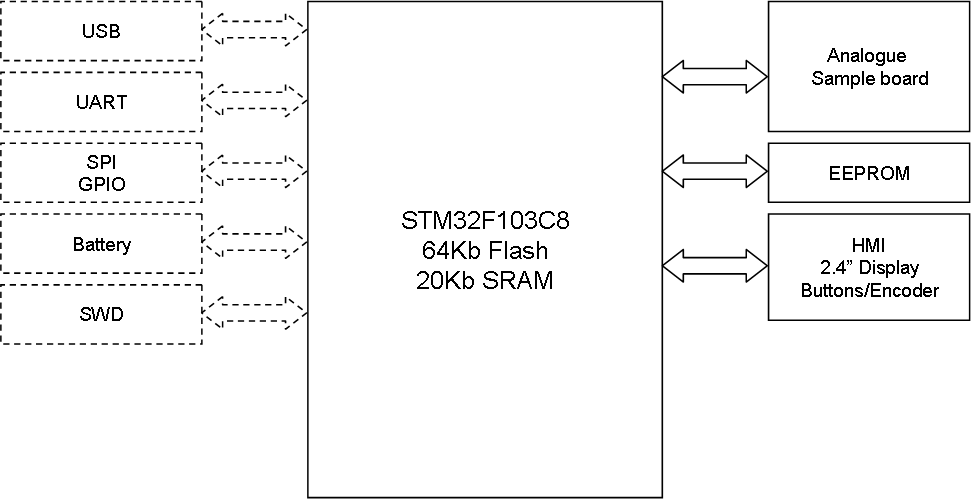DSO150 is very easy to use and operate like a multi-meter, and this caught my attention because the other Oscilloscopes I havve needs to be set up. DSO150 is basically only to switch on and use like a Multi-meter – you instantly see the signal and it was surprisingly easy to operate the HMI. I added a 9V battery to make it mobile and to avoid isolate the instrument. And all for a cost of ca 20.- USD.
Holding the OK button switched numbers on/off. V/Div adjust Y-scale gain and offset. Sec/Div adjust X-Scale gain/offset. Trigger select between Auto, Normal and Single shot as well as select between triggering on rising/falling edge. OK also hold the sognal so it freezes on screen. It takes a little practice to play and operate it, but once you get it into your fingers it actually is very functional for what it is.
It’s loads of things to complain about on DSO150 if you compare it to a professional Oscilloscope, but DSO150 cost 20.- USD and come in a form of a multi-meter. I actually only have one suggestion – add a battery holder and add USB. My point is that I do have Professional Oscilloscopes and this actually fills a gap between the multi-meter and those Scopes. I already had a small, hand-held Scope, but the HMI – button/knob solution on DSO150 is so more functional.
And yes – please chose a better MCU and increase bandwidth, but here is the catch – if someone does that it will not cost 20.- USD anymore. I need to glue a 9V battery holder on the back, but other than that this is perfect for those cases where I just need a simple scope solution to replace the volt meter.
The STM32F103C8 is a bit limited, but I can easily replace that with STM32F103CB or even STM32F303CC to get more Flash, SRAM and DSP power. I have not downloaded and played with the source code yet, but this is another attraction – an instrument I actually can program myself .

